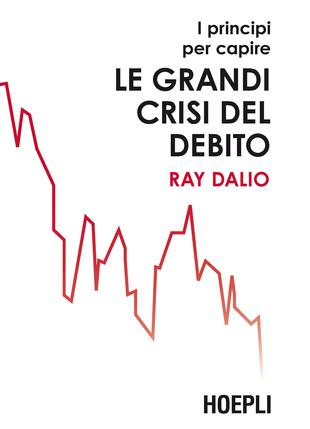

Sinossi
Ray Dalio, uno degli investitori di maggior successo al mondo, presenta il suo metodo per capire il funzionamento delle crisi del debito e i principi che si devono seguire per affrontarle al meglio. Questo modello ha permesso alla sua società, Bridgewater Associates, di anticipare gli eventi e di riuscire a orientarsi in situazioni nelle quali altri investitori hanno invece incontrato notevoli difficoltà. Come ha spiegato nel suo libro "I principi del successo", Dalio è convinto che quasi tutti gli eventi si ripetano nel tempo e che quindi, studiando le loro ciclicità, si possano comprendere le relazioni di causa e effetto. Partendo da questi legami l'autore descrive quali sono gli elementi da monitorare per individuare i vari fattori di crisi. In questo nuovo libro Dalio applica la sua metodologia alle grandi crisi del debito e presenta i suoi principi, con l'obiettivo di ridurre la probabilità di crisi future e di promuoverne una gestione corretta. Il volume è suddiviso in due parti: 1. Il modello del debt cycle. 2. Tre casi dettagliati: la depressione in'azionaria della Repubblica di Weimar in Germania, la Grande Depressione degli anni Trenta e la crisi finanziaria del 2008. Che siate investitori, decisori politici o semplicemente persone interessate al tema, la prospettiva anticonformista di uno dei pochi che è riuscito a superare la crisi aiuterà a comprendere meglio l'economia e i mercati finanziari e a vederli sotto una luce diversa.
- ISBN: 8820394553
- Casa Editrice: Hoepli
- Pagine: 250
- Data di uscita: 08-05-2020
Recensioni
Key takeaways: * Debt isn’t necessarily bad. In fact, having too little debt creates economic problems in the form of forgone opportunities. The key is to ensure productive utilization of the borrowed money to produce income needed to service that debt * Crisis and debt cycles are inevitable due to hu Leggi tutto
Regular readers of Bridgewater's Daily Observations will be familiar with the thinking and sections presented here. Bridgewater's/Dalio's framework for thinking through debt cycles is historically grounded and pretty rigorous, and serves as a good reference and guide when thinking about markets - bo Leggi tutto
I received this book, for free, in exchange for an honest review. This book is an excellent book for a specific audience. This book needs to be read slowly and deliberately. It is a work of great intelligence and research with a corresponding level of reading difficulty. Much of the information was abov Leggi tutto
A must read for Central Bankers. https://www.principles.com/big-debt-c... https://www.economicprinciples.org It’s Time to Look More Carefully at “Monetary Policy 3 (MP3)” and “Modern Monetary Theory (MMT)” https://www.linkedin.com/pulse/its-ti... The Next CRASH Causes & What Should You Do. Ray Dalio on T Leggi tutto
Definitely TOP5 book about finance/economics I have ever read. For investors who want to get a deep understanding about causes for deflationary and inflationary financial crisis and processes that countries are facing during it this is a great manual. I especially enjoyed 2nd part of the book where
Fav highlights: • To anticipate a debt crisis well, one has to look at the specific debt-service abilities of the individual entities, which are lost in these averages. More specifically, a high level of debt or debt service to income is less problematic if the average is well distributed across the Leggi tutto
Here are my key takeaways from the book: -Bad debt losses are when 40% of a loan’s value cannot be paid back and they account for about 20% of outstanding loans in a big crisis. This is 8% of the total debt. If debt-to-GDP is 200%, then the shortfall is roughly 16% of GDP. A society could spread thes Leggi tutto
Citazioni
Al momento non ci sono citazioni, inserisci tu la prima!























